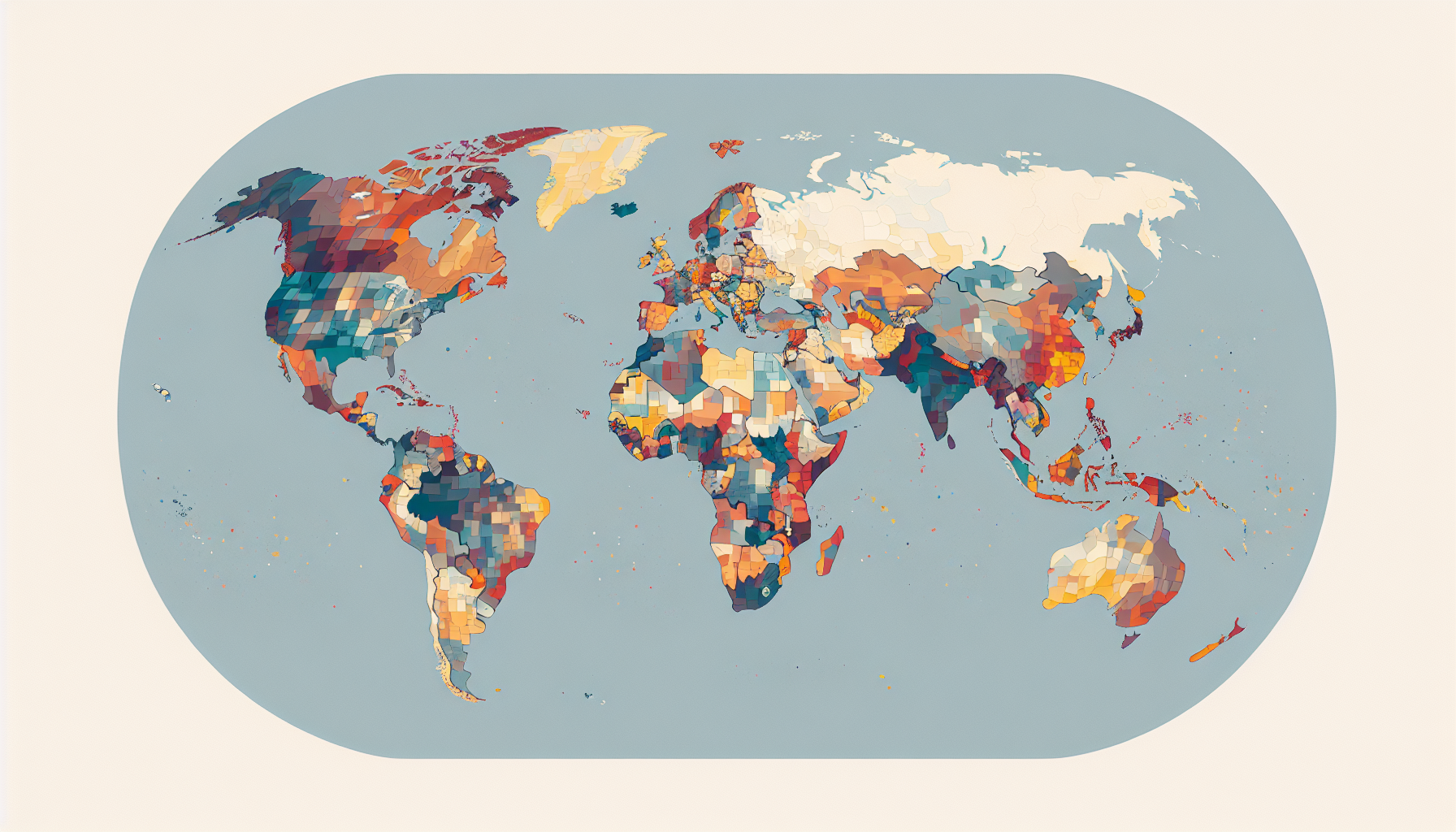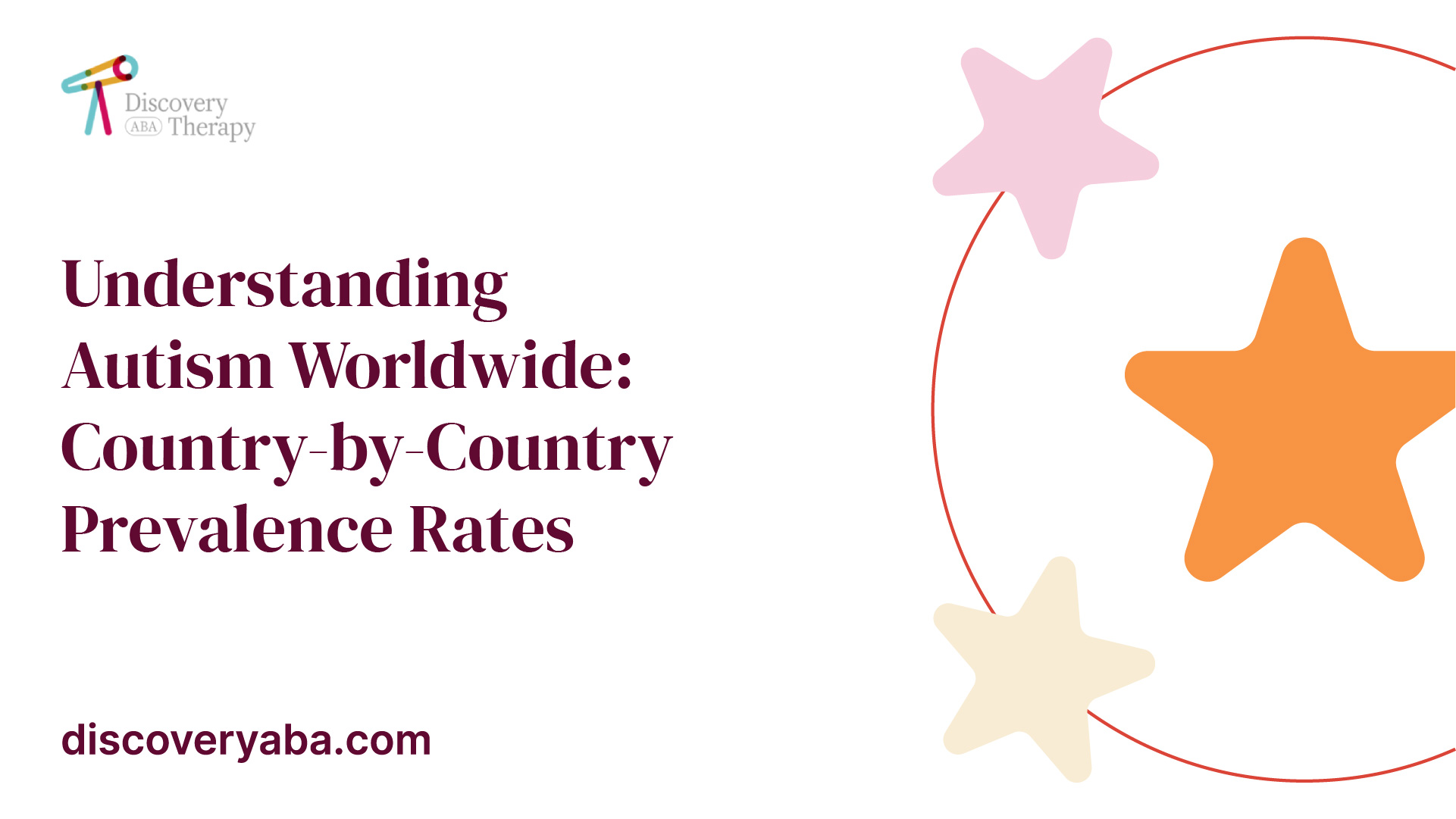Understanding Autism Worldwide: Country-by-Country Prevalence Rates
Discover autism prevalence rates worldwide! From gender disparities to regional variations, explore country-by-country data on autism rates.

Understanding Autism Prevalence
To comprehend the prevalence of autism worldwide, it is important to first understand what autism is and then examine the global prevalence rates of this condition.
What is Autism?
Autism, also known as autism spectrum disorder (ASD), is a complex neurodevelopmental condition characterized by communication difficulties, impaired social skills, and restricted and repetitive behaviors. People with autism may experience hypersensitivity to sensory input and encounter challenges in verbal and nonverbal communication. Autism manifests differently in individuals, with a wide range of symptoms and severity levels.

Global Prevalence of Autism
The global prevalence of autism spectrum disorder is estimated to be around 0.6%, with a confidence interval of 0.4-1%. This means that approximately 168 million people worldwide are affected by autism. However, it is essential to note that prevalence rates can vary across different regions and countries.
Subgroup analyses have indicated that the prevalence of autism spectrum disorder in Asia is 0.4%, in America is 1%, in Europe is 0.5%, in Africa is 1%, and in Australia is 1.7% [2]. These variations highlight the importance of considering regional differences when studying autism prevalence.
In the United States, the prevalence of autism spectrum disorder among 8-year-old children was reported as 1 in 59 in 2014 and 1 in 54 in 2016. Furthermore, the prevalence of ASD in children and adolescents in the United States was estimated to be 2.5% in 2014-2016. The United States has consistently reported one of the highest prevalence rates of autism.
It is important to note that the global prevalence of autism has shown an increasing trend over time. Estimates have risen from 0.6% in 2003 to 1.25% in 2021. The rising numbers reflect improvements in diagnostic categories, research quality, methodology, increased awareness, and acceptance of autism.
Understanding the prevalence of autism is crucial for developing appropriate resources, support systems, and interventions for individuals on the autism spectrum. By recognizing the global impact of autism and the variations in prevalence rates across different regions, we can work towards enhancing the well-being and inclusivity of individuals with autism worldwide.
Factors Influencing Autism Prevalence
Understanding the factors that influence autism prevalence is essential to gain insights into the distribution of autism spectrum disorder (ASD) across different populations. Several factors contribute to variations in autism prevalence, including gender disparities, regional variations, and trends over time.
Gender Disparities in Autism
Research consistently shows that the prevalence of autism is higher in males compared to females across various countries and regions. This gender disparity has been observed in multiple studies. The reasons behind this discrepancy are still not fully understood, and ongoing research aims to shed light on the underlying factors contributing to this gender difference.
Regional Variations in Autism Prevalence
Autism prevalence rates can vary significantly by region. Developed countries tend to display higher prevalence rates compared to developing countries [3]. This variation may be influenced by several factors, including differences in diagnostic practices, access to healthcare services, awareness, and cultural perceptions of autism.
Trends in Autism Prevalence Over Time
The prevalence of autism has shown an increasing trend over time. Studies have documented a rise in autism prevalence rates in various countries. For example, according to the Autism and Developmental Disabilities Monitoring (ADDM) Network launched by the Centers for Disease Control and Prevention (CDC) in the USA, the prevalence of ASD among 8-year-old children has increased significantly over the years. The most recent report revealed a prevalence of approximately 230 per 10,000 children, indicating a 243% increase since the first ADDM Network study in 2000.
Globally, the prevalence of ASD has also shown an increasing trend. Estimates indicate that the global ASD prevalence has risen from 0.6% in 2003 to 1.25% in 2021. This upward trend highlights the importance of ongoing research and awareness efforts to better understand and support individuals with autism.
Understanding the factors that influence autism prevalence, such as gender disparities, regional variations, and trends over time, provides valuable insights into the complex nature of autism spectrum disorder. This knowledge can help guide future research, public health initiatives, and support services aimed at addressing the needs of individuals on the autism spectrum.
Autism Prevalence by Country
Autism prevalence rates vary across countries, reflecting differences in diagnostic criteria, data collection methods, and cultural factors. Understanding the variation in autism prevalence can provide insights into the global landscape of autism spectrum disorder (ASD). In this section, we explore countries with high autism prevalence and those with low autism prevalence.
Countries with High Autism Prevalence
The United States reports one of the highest autism prevalence rates, with a rate of 2.58% in 2021, according to [5].
North America, in general, has shown higher prevalence estimates compared to other geographical regions, as reported by a study published in the NCBI. However, it is important to note that prevalence rates can vary within North America and across states within the United States.
Countries with Low Autism Prevalence
France is reported to have one of the lowest autism rates, with a prevalence of 69.3 per 10,000 people, which is equivalent to 1 in 144 individuals. Portugal follows closely with a prevalence of 70.5 per 10,000 people, or 1 in 142, according to the World Population Review. These rates indicate lower prevalence compared to other countries, but it's important to consider that prevalence estimates can be influenced by various factors including diagnostic practices and data collection methods.
It is crucial to note that autism prevalence rates can be influenced by various factors, including diagnostic criteria and methodologies used for data collection. Additionally, regional variations within countries can also contribute to differences in reported prevalence rates. Therefore, it is important to interpret prevalence rates within the context of each country's specific circumstances and approach to autism diagnosis and reporting.
Understanding the range of autism prevalence rates across countries can contribute to a broader understanding of the global landscape of autism spectrum disorder. By recognizing these variations, policymakers and healthcare providers can better allocate resources and develop tailored interventions to support individuals with autism in different regions.
Challenges in Estimating Autism Prevalence
Estimating the prevalence of autism worldwide poses several challenges due to various factors. These challenges contribute to variations in reported rates across countries and regions. In this section, we will explore two key challenges in estimating autism prevalence: methodological considerations and data gaps in low- and middle-income countries.
Methodological Considerations
Tracking autism rates relies on the identification and diagnosis of individuals presenting with autism spectrum disorder (ASD). However, the lack of specific uniform criteria for diagnosing autism poses a challenge. Diagnosis is typically based on expert clinical observations of behavior, as there is no definitive objective test for autism. This subjectivity can introduce variability in diagnoses across different clinicians and settings.
The precision of prevalence estimates can also be influenced by the study design. Studies that use records-review surveillance, involving the review of existing records to identify cases of autism, tend to report higher prevalence estimates compared to studies with other designs. This suggests that different study designs can yield different prevalence estimates for autism, further complicating the estimation process.
Data Gaps in Low- and Middle-Income Countries
While prevalence studies have been conducted in at least 37 countries worldwide, there is a significant lack of data on ASD prevalence in many low- and middle-income countries. Limited resources and infrastructure in these countries often hinder the conduct of comprehensive assessments and data collection efforts. As a result, prevalence rates for autism in these regions remain largely unknown.
The absence of reliable data in low- and middle-income countries presents a challenge in obtaining a comprehensive and unified worldwide prevalence estimate for autism. Without robust data from these regions, the global understanding of autism prevalence is incomplete. Efforts should be made to prioritize research and data collection in these underserved areas to bridge the data gaps and provide a more accurate representation of autism prevalence on a global scale.
In conclusion, estimating the prevalence of autism worldwide faces challenges due to the lack of uniform diagnostic criteria, methodological considerations, and data gaps in low- and middle-income countries. These challenges highlight the need for standardized diagnostic procedures, improved study designs, and increased research efforts in underserved regions. By addressing these challenges, we can enhance our understanding of autism prevalence and facilitate the development of effective interventions, support systems, and policies for individuals with autism spectrum disorder worldwide.
References
Find More Articles
Contact us
North Carolina, Tennessee, Nevada, New Jersey, Utah, Virginia
New Hampshire, Maine
Massachusetts, Indiana, Arizona, Georgia
.avif)






























































































.jpeg)






